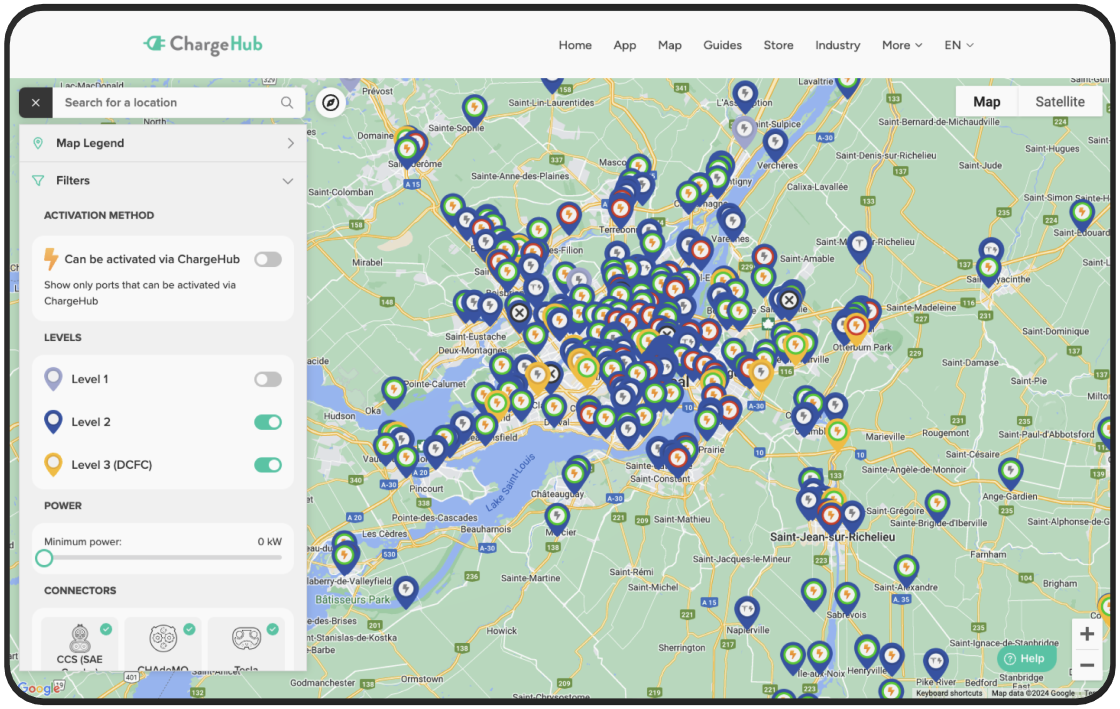-
EV Business Solutions
-
EV Drivers
-
Our Company
-
Resources
Plug & Charge Explained: Seamless EV Charging
Plug and Charge technology is transforming the EV charging experience.
As the electric vehicle (EV) ecosystem grows, so does the need for a seamless charging experience. Whether you're an EV driver, an automaker, or part of a charging network, public charging is essential. Today, public charging often requires juggling mobile apps, accounts, or RFID cards to initiate a charging session. The result? Friction for users and complexity for industry stakeholders.
Plug & Charge changes that. Based on ISO 15118, an international standard that defines the communication protocol between EVs and charging stations, it allows EV drivers to plug in and walk away. No phone. No extra steps. The EV, charging station, and back-end systems handle everything securely and automatically.
👉Want a quick overview? Check out Understanding Plug & Charge: Simplifying the EV Charging Experience.
How Does Plug & Charge Work

Instead of tapping your phone, entering a PIN, or swiping a card, you simply plug in your EV and go. Identity, payment and security are all handled instantly in the background. For a deeper dive into the steps behind Plug & Charge, check out the RAAR Process.
Plug & Charge connects your EV to your charging contract through a digital certificate. When you plug the charging port into your EV, the system instantly registers your vehicle, authenticates your credentials, authorizes the session, initiates the charging session, and handles reconciliation, in this context, the billing process, all without any extra action.
While the experience is seamless for the driver, who is automatically billed based on their usage, much more happens behind the scenes. Passport Hub, ChargeHub’s EV roaming hub, plays a key role by securely coordinating the exchange of data between all stakeholders, including charging networks and mobility service providers. It ensures that each party is correctly identified, authorized, and compensated, making Plug & Charge not just simple but fully interoperable.
Ensuring the safety and integrity of Plug & Charge transactions is essential. The use of a Public Key Infrastructure (PKI), a system that securely manages digital identities and enables encrypted, automated authentication between EVs and charging stations.
Behind the scenes of P&C: RAAR

Plug & Charge operates through four key steps, referred to as RAAR. This framework ensures secure, automated interaction between the vehicle, the charger, and the back-end systems:
- Registration: A one-time configuration that equips the vehicle with a digital identity and links it to a valid charging contract.
- Authentication: A secure exchange that establishes communication between the EV and the charging station.
- Authorization: A verification step that confirms the charging session is permitted based on the driver’s active contract, enabling charging on multiple networks.
- Reconciliation: The final stage, where all session data and payment details are processed and settled so the driver is correctly billed.
👉 Watch our video: How Plug and Charge Works: The RAAR Process Explained.
Who Can Use Plug & Charge?
A growing number of EV drivers and fleets can enjoy a simplified charging experience with Plug & Charge. However, compatibility depends on several factors, including the vehicle’s model year, software version, and the technical specifications of the charging station.
⚠️ Important
Even if your vehicle is compatible, this feature may not be available everywhere. Plug & Charge also relies on the charging network and the station’s hardware. Always check with your vehicle manufacturer and charging provider to confirm availability.
Below are examples of vehicles that are Plug & Charge-ready and networks that have begun enabling Plug & Charge on certain stations in North America.
List of compatible EV models with Plug & Charge in North America
-
Audi Q4 e-tron
-
Audi Q8 e-tron
-
BMW i4
-
BMW i5
-
BMW i7
-
Chevrolet Bolt EUV
-
Chevrolet Blazer EV
-
Chevrolet Equinox EV (Upcoming)
-
Chevrolet Silverado EV
-
Ford Mustang Mach-E
-
Mercedes-Benz EQE
-
Mercedes-Benz EQS
-
Porsche Taycan
-
Tesla Model 3
-
Tesla Model S
-
Tesla Model X
-
Tesla Model Y
Source: Inside EVs. Note: This list is continually evolving (Last updated June 2025).
List of compatible charging networks in North America
- Electrify America
- EVgo
- ChargePoint
- Shell Recharge
- ViaLynk
Note: Not all charging ports within a charging network may support Plug & Charge.
Is Plug and Charge Worth it?
Plug & Charge is a game-changer for the entire EV ecosystem. By enabling seamless, secure, and automatic authentication and billing between the EV and the charging station, it benefits everyone involved.

For EV drivers
Plug and Charge offers the most effortless and secure charging experience. It removes barriers to adoption, reduces user frustration, and builds confidence in public charging networks.

For charging point operators (CPOs)
Plug & Charge eliminates the need for RFID cards or manual user input, reducing friction at the charging station and ensuring a smoother experience. This boosts customer satisfaction, increases user retention, and reduces the number of failed or abandoned charging sessions.
For car makers
For car makers, the Plug & Charge technology, integrated directly into the vehicle’s software, offers an intuitive charging experience that helps differentiate them.

For fleet managers
Plug & Charge streamlines authentication and billing, saving valuable time at scale while reducing charging errors. Consistency across public charging sessions is a significant advantage when managing EV fleets.
Ready to simplify charging for your customers, drivers, or fleet?
Contact us to discover the Plug & Charge solution that best suits your needs.
What are Plug & Charge, Autocharge and RFID Cards?

Plug & Charge, Autocharge, and RFID cards are three different methods for authenticating and initiating an EV charging session.
Plug & Charge
P&C enables a fully automated process and highly secure charging process. When an EV is plugged into a compatible charging port, it identifies itself using secure digital certificates, and the session starts without any manual input. Thanks to its scalability and strong cybersecurity, Plug and Charge is widely regarded as the future standard for public EV charging.
Autocharge
Autocharge allows your EV to start charging automatically upon connection. It works by linking your EV’s unique hardware ID (usually the MAC address) to your account. Once registered, the charging station recognizes your vehicle and initiates the session. This method is simple and works well in smaller networks or fleet systems, but it is less secure than Plug & Charge because the hardware ID can be copied or spoofed.
RFID cards
RFID cards require users to tap a physical card on the charging infrastructure to start a session. Although widely supported, not all chargers offer this feature. Users may also need to manage multiple cards or accounts across different charging networks, which can be less convenient.
Feature Comparison
|
Feature |
Plug & Charge |
Autocharge |
RFID Cards |
|---|---|---|---|
| Standardized | Yes (ISO 15118) | No | Yes |
| Security | High (encrypted certificates) | Medium (MAC address-based) | Low to Medium |
| Ease of Use | Seamless | Simple | Manual |
| Vehicle Support | Recent vehicles only | Limited to certain vehicles | Most EVs |
| Network Support | Expanding | Limited | Relatively uncommon |
FAQ
What does Plug and Charge mean?
One of the technologies introduced by the ISO 15118 is called Plug and Charge (P&C). This convenient technology provides a seamless charging and payment experience for drivers by enabling EVs to start charging automatically when plugged into compatible charging points. “The magic” is that EV drivers do not need any additional authentication or physical interaction like tapping a credit or debit card, using a smartphone application or an RFID card. Plug and Charge relies on Public Key Infrastructure (PKI), a security framework that ensures encrypted communication and mutual trust between the vehicle, the charging station, and the charging service provider. P&C has the potential to surpass the gas station refuelling experience by enhancing convenience in public charging, where multiple drivers need to charge their EVs quickly.
How is security enabled with the Plug & Charge technology?
The ISO 15118 standard, which governs Plug & Charge, is built on the highest security requirements. It relies on digital certificates, which are responsible for identifying ecosystem participants and facilitating encrypted communication between them. For example, each charge point and charging contract are represented by a unique certificate. For the system to function, certificates must be present in vehicles, charging points, and backend systems. A trusted third-party entity, such as a Certificate Authority, must be part of the entire chain to enable the seamless and secure operation of Plug & Charge, thereby providing trust between the vehicle, the charging station, and the backend systems.
How advanced is the Plug & Charge technology?
Tesla's proprietary Supercharger network has been using a process very similar to Plug & Charge for years, but newer universal standards are expanding this to more vehicle brands and networks. The Plug & Charge technology for electric vehicles (EVs) has made significant advancements in recent years. ISO 15118 is the standard framework that governs communication between EVs and the charging infrastructure. Major EV manufacturers and charging networks broadly accept this standard and are now implementing it.
Although adoption is growing, Plug & Charge is still not widely available across EV models and charging networks. Today, only a limited number of EVs and stations are compatible. However, it enjoys strong support from both automakers and infrastructure providers. As adoption progresses, its broader integration could significantly simplify the EV charging experience and support the global shift toward electric mobility.
What’s the best app for paying at public EV charging stations?
ChargeHub is the top choice for how to pay for EV charging because it consolidates over 155,000 public charging ports into a single, easy-to-use platform.

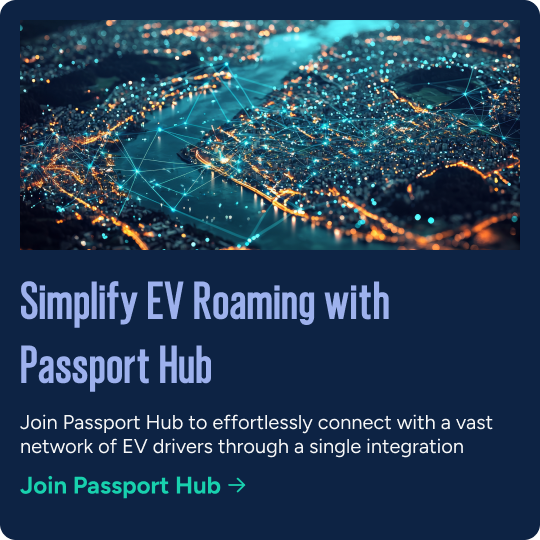
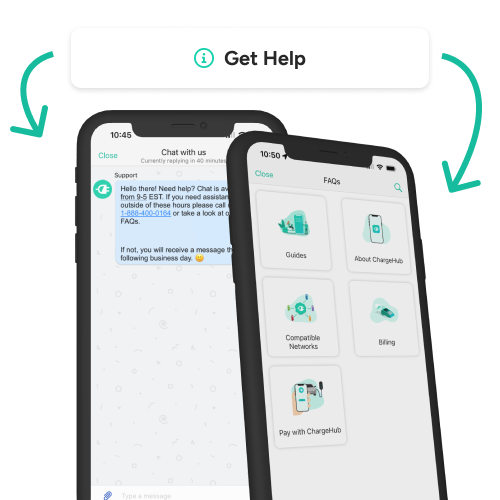

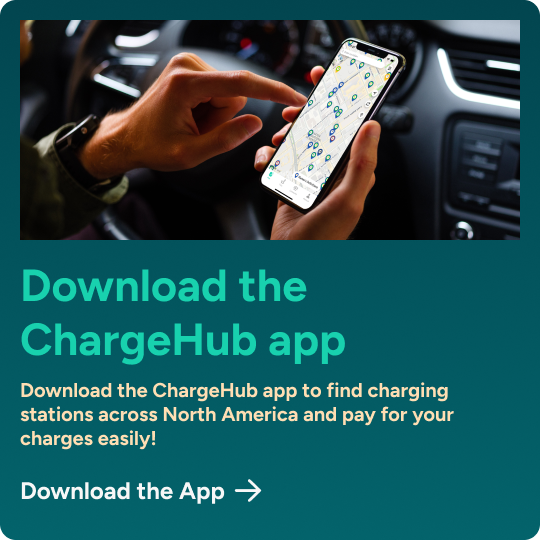
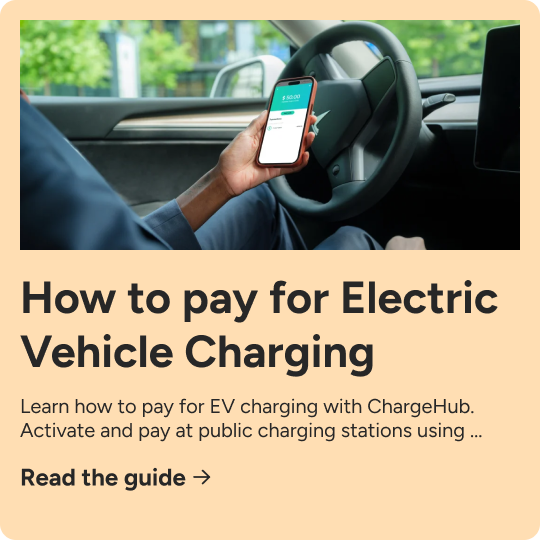


.jpg?width=843&height=560&name=Charger-Comparison%20(1).jpg)
